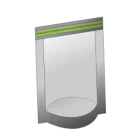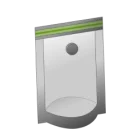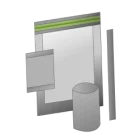Plasticware and Food Packaging: Striking a Balance Between Convenience and Sustainability
Product packaging serves multiple purposes, including protecting the product during transportation and storage, attracting customers, and conveying information. It makes products easier to store, use, and transport (e.g., resealable pouches or portion-sized packaging). Product packaging helps in brand identity and draws attention through design, colors, and materials. Latest trends in product packaging, such as minimalist design emphasize clean and simple packaging while sustainable product packaging solutions emphasize the use of recyclable, compostable, or reusable materials. Many companies focus on environmentally friendly product packaging to reduce waste and attract eco-conscious consumers.
Plastic packaging is a widely used material for wrapping, storing, and protecting goods, especially in the food industry. Being lightweight, it reduces transportation costs and carbon footprint, protects food from moisture, air, and contaminants. Plastic packaging is economical also compared to other materials, and provides excellent protection against damage during transportation. Plastic food packaging is an essential part of the modern food supply chain, offering protection, preservation, and convenience. Plastic food packaging helps in extending shelf life by preventing spoilage from air, moisture, and UV light, and can be easily resealed for easy transport.
At Entrepouch, we offer a variety of plastic food packaging solutions to industries and businesses in the Philippines, and overseas, such as:
Pouches and Bags: Made of polyethylene or polypropylene, used for snacks, frozen foods, and liquids.
Food Containers: Typically made of PET, PP, or HDPE, used for dairy products, ready meals, and sauces.
Bottles and Jars: PET is often used for beverages, while HDPE is used for milk and condiments.
Multi-Layer Films: Often used for processed foods like chips or coffee; combines layers of plastic for moisture, gas, and light barriers.
Cling Film: Made of LDPE or PVC, commonly used for wrapping fresh produce, meats, and baked goods.
Vacuum-Sealed Packaging: Combines plastic films like PET or nylon with an airtight seal, extending shelf life by reducing oxygen exposure.
Plasticware is commonly used to utensils, containers, and other tools made of plastic used in food preparation, serving, and storage. Plasticware is a popular choice for meal prep, storage, and on-the-go dining. Our specialty plasticware solutions are microwave-safe, freezer-safe, and include compartmentalized containers, which are ideal for specific uses like portion control or storage.
Our plasticware and plastic food packaging solutions are widely used in the food industry due to their versatility, affordability, and ability to preserve food.
Plasticware for food packaging and meal preparation
One of the primary advantages of plasticware is its convenience, especially in the form of disposable products used in takeout, catering, and events. Plasticware is widely used for disposable items like cups, plates, forks, spoons, and knives, as well as reusable options like food storage containers, meal prep boxes, and travel-friendly bottles. The versatility of plastic makes plasticware ideal for a variety of applications, offering lightweight, durable, and cost-effective solutions for both everyday use and commercial purposes.
One of the primary advantages of plastic food packaging is its convenience, especially in the form of disposable products used in takeout, catering, and events. These items are lightweight, easy to transport, and eliminate the need for washing, saving time and effort. Reusable plasticware, on the other hand, is designed for longevity and is commonly used for meal preparation, microwave heating, and storing leftovers. Specialized plasticware, such as airtight containers or compartmentalized lunchboxes, helps maintain food freshness and organization.









